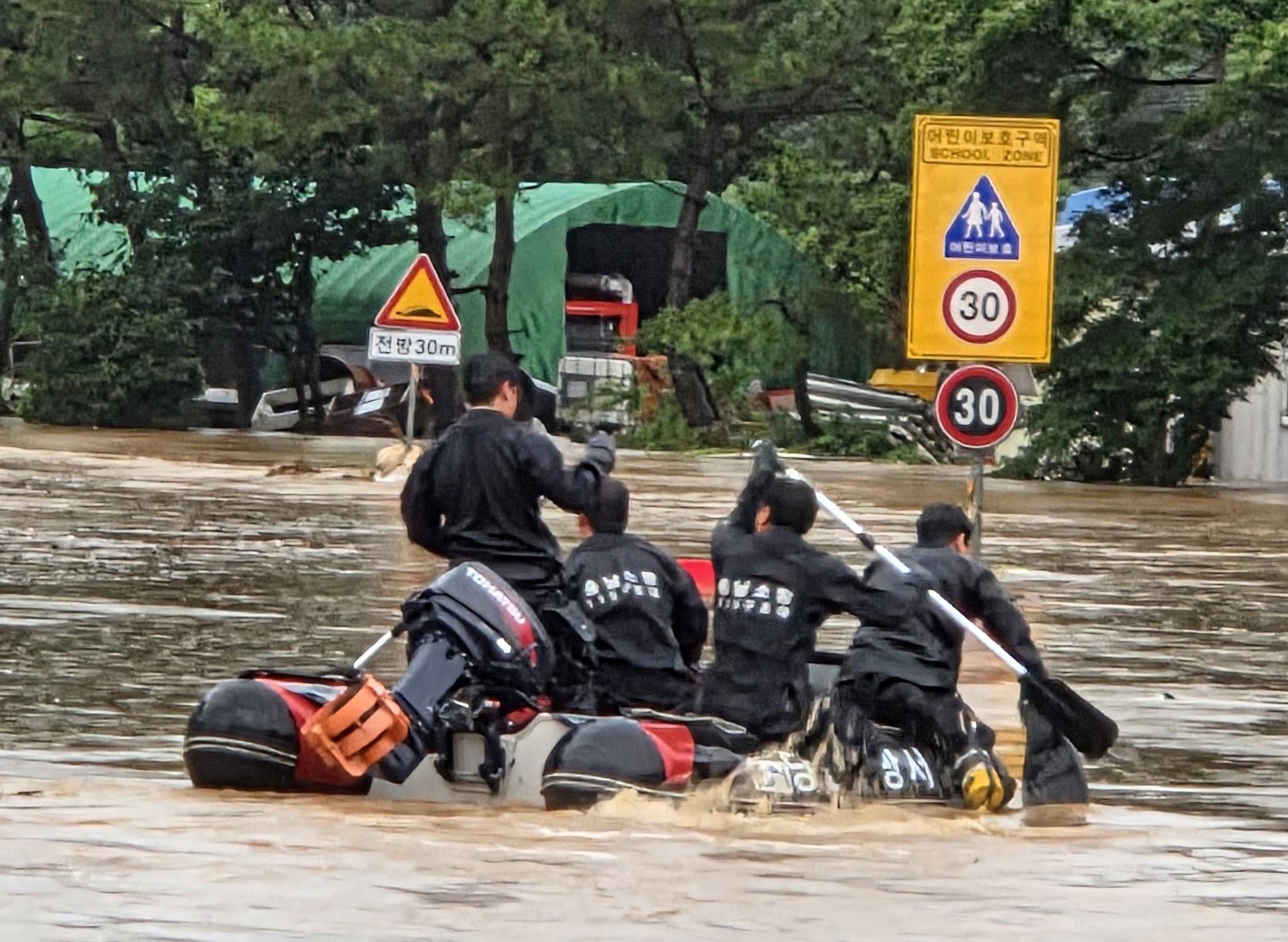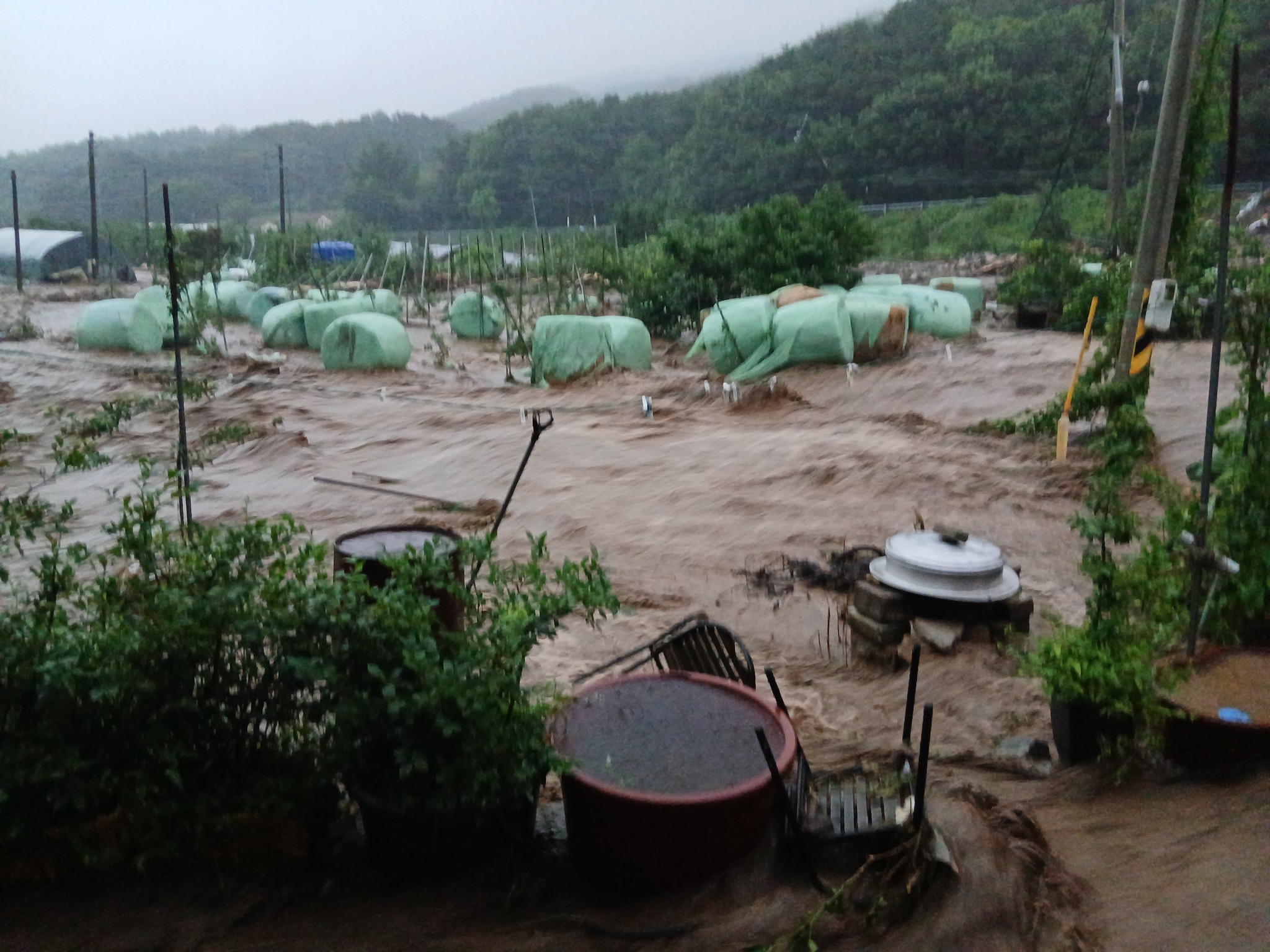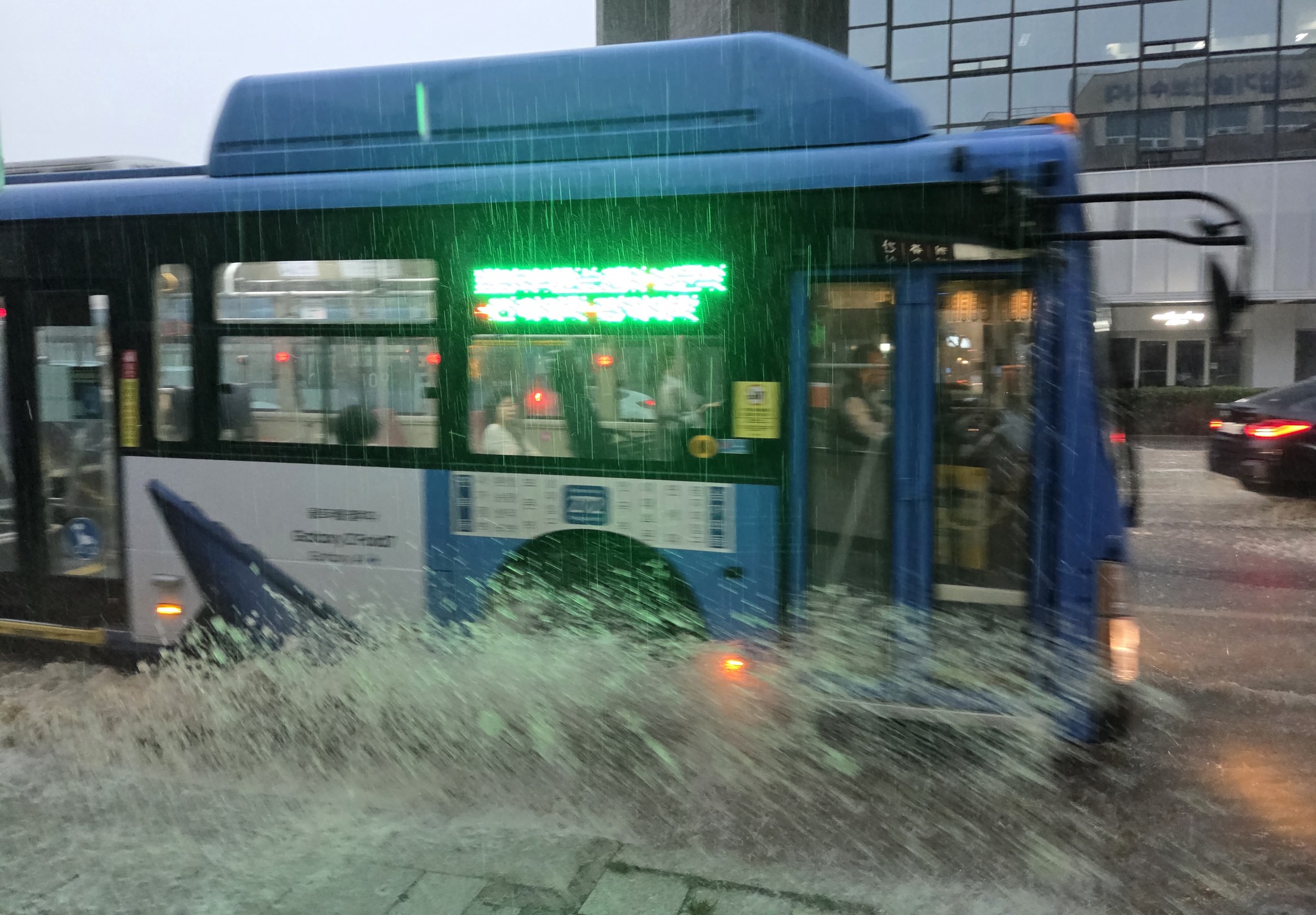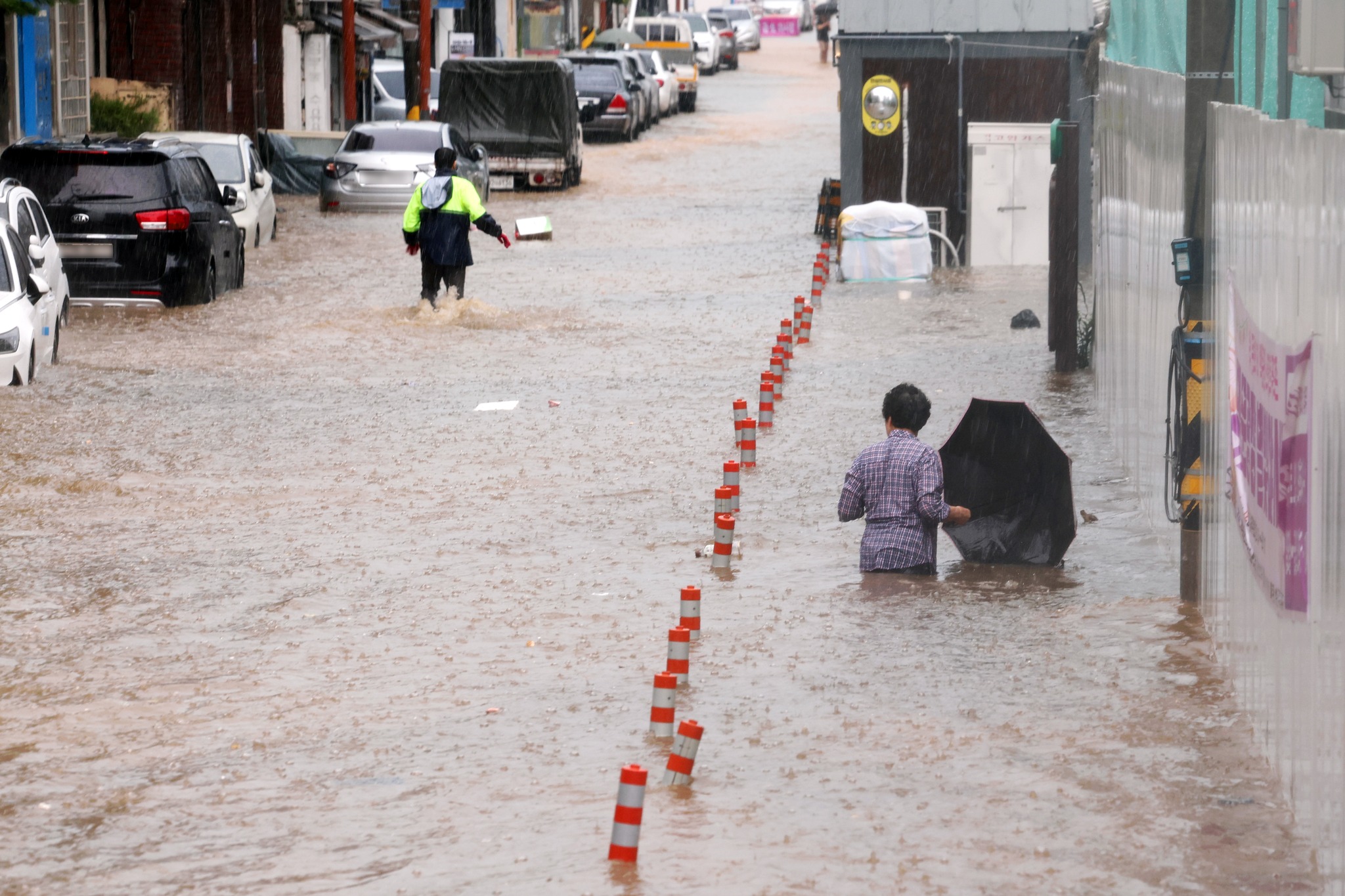Seoul, South Korea — South Korea is grappling with the aftermath of relentless torrential rains that have battered the country since Wednesday, resulting in at least four deaths, major infrastructure damage, and widespread evacuations. Authorities have issued the highest-level disaster alert as heavy rainfall continues to impact multiple provinces.

The Ministry of the Interior and Safety confirmed that four people have died in rain-related incidents. Among the casualties was a driver in Osan, about 44 kilometers south of Seoul, who was killed when a retaining wall collapsed onto a moving car. In the southern regions of the country, one person was found dead inside a submerged vehicle, another was discovered in a flooded stream, and the fourth victim died in a basement inundated by rising floodwaters.
Emergency responders have been on high alert, assisting with evacuations and conducting rescue operations in areas most at risk of landslides and flash floods. As of Thursday night, more than 1,300 people had been evacuated from their homes, and nearly four dozen domestic flights were grounded due to severe weather conditions.

Some of the heaviest rainfall has been recorded in South Chungcheong Province, where more than 420 mm (16.5 inches) of rain fell in just over 24 hours. Authorities warned that more landslides could occur in the region as the ground remains heavily saturated. The Korea Meteorological Administration has continued to issue heavy rain advisories, especially for the country’s southern and western regions, where additional downpours are expected through the weekend.
In the southwestern city of Gwangju, more than 87 roads and 38 buildings were flooded after the city was drenched with over 100 mm of rain in under two hours. Commuters were stranded, and emergency services were overwhelmed by calls for help. The city, located 267 kilometers from Seoul, is one of the hardest-hit urban areas, with local authorities describing the flooding as “historic.”
President Lee Jae-myung convened an emergency meeting on Thursday to address the growing crisis. During the briefing, he acknowledged that gaps in early warning systems may have contributed to the casualties. “Some of these deaths occurred in places where the dangers could have been foreseen,” he said, calling for a comprehensive review of the country’s disaster preparedness and response infrastructure.

The Korea Forest Service has also raised landslide alerts to the highest level in vulnerable mountainous areas. As the country braces for further downpours, public safety officials are urging residents to avoid basements, underground facilities, and low-lying areas prone to sudden flooding.
South Korea frequently experiences heavy rains during the summer monsoon season, but the increasing intensity and unpredictability of these events have raised concerns about the growing impact of climate change on regional weather patterns. Experts warn that unless substantial investments are made in infrastructure and early warning systems, such disasters could become even more deadly in the years to come.
This article is based on reporting by the BBC. Full original report available at BBC News.







